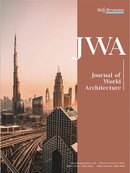The Application of Pile Foundation Bearing-Retaining Wall Combination Structure in a Mountainous Urban High Fill Project
Abstract
Pile foundation bearing-retaining wall combination structure is a new type of support structure developed in recent years. This article focuses on the characteristics, advantages, and application scope of the support structure, while combining a variety of algorithms, according to different geological conditions and slope stability, as well as summarizes the pile foundation bearing-retaining wall combination structure force analysis and design methods, taking a high-fill road project in Chongqing as an example. The application of this support structure under special conditions, such as thicker soil layer, steeper sliding surface, weak foundation, and limited slope release conditions, is presented, which illustrates the technical advantages of this support structure and proving that it has several other advantages, including clear force mechanism as well as economic and reasonable structure, thus providing reference for similar projects.
References
Yu Y, Liu H, 2016, Application of Supporting Wall Type Retaining Wall in Mountainous Highway. Transportation Science and Technology, 2016(5): 104–106.
Xie D, 2020, Application of Reinforced Earth Retaining Wall in Urban Riverine Roads. Building Materials and Decoration, 2020(17): 277–278.
Huang Y, 2015, Application of H-Type Pile Plate Retaining Wall in Railroad Engineering. Science and Technology Innovation Herald, 12(25): 34–35.
Cheng J, Yin H, 2019, Design Points of Retaining Wall of Supporting Wall Applied in Hydraulic Buildings. Science and Technology Innovation and Application, 2019(12): 71–72.
Luo Y, 2005, An Analysis of the Advantages of the New Retaining Structure in the Railway Line. Subgrade Engineering, 2005(5): 90–91.
Wang J, Liang Y, Zhang H, et al., 2014, A Loess Landslide Induced by Excavation and Rainfall. Landslides, 11(1): 141–152.
Sarma SK, 2006, Determination of Critical Slip Surface in Slope Analysis. Geotechnique, 56(8): 539–550.
Wang J, Zhang H, Zhang L, 2012, Experimental Study on Heterogeneous Slope Responses to Drawdown. Engineering Geology, 147–148: 52–56. https://doi.org/10.1016/j.enggeo.2012.07.020
Yan Z, Wang J, Chia H, 2010, Influence of Water Level Fluctuation on Phreatic Line in Silty Soil Model Slope. Engineering Geology, 113: 90–98.
Wang J, Zhao D, Liang Y, et al., 2013, Angle of Repose of Landslide Debris Deposits Induced by 2008 Sichuan Earthquake. Engineering Geology, 156: 103–110.
Wang J, Zhang H, Chai H, et al., 2008, Seismic Passive Resistance with Vertical Seepage and Surcharge. Soil Dynamics and Earthquake Engineering, 28(9): 728–737.
Zhou C, Liu Z, Shang W, et al., 2005, Portal Double Row Anti Slide Pile Design Calculation of the New Model. Rock and Soil Mechanics, 26(3): 441–449.
Qian T, Tang H, 2009, The Calculation Model of Pile Space Portal Double Row Anti Slide. Rock and Soil Mechanics, 30(4): 1137–1141.
Qian T, Xia W, Chao Z, et al., 2011, Calculation Method of Frame Anti Slide Pile Considering Spatial Coordination. Journal of China University of Geosciences, 36(6): 1143–1148.
Sun Y, 2009, Study on the Calculation Method of Anti Slide Pile Structure with Double Row Under Sliding Surface. Rock and Soil Mechanics, 30(10): 2971–2977.
Chen G, Xie S, 2013, Study on Calculation Method and Engineering Application of Portal Double Row Anti Sliding Piles. Highway Engineering, 38(5): 176–179.
Yong J, Teng B, Yang M, et al., 2010, Plasticity Analysis Model and Calculation of Pile Elastic Anti Sliding Gate Type Double Row. Rock and Soil Mechanics, 31(7): 2146–2151.
Wang J, 2017, Calculation Method for the Design of Double-Row Pile-Bearer-Retaining Wall Combination Structure. Journal of Underground Space and Engineering, 13(2): 442–452.
Xiao S, 2010, Analysis Method and Engineering Application of H Type Combined Anti Slide Pile in Slope Treatment. Rock and Soil Mechanics, 31(7): 2146–-2151.

